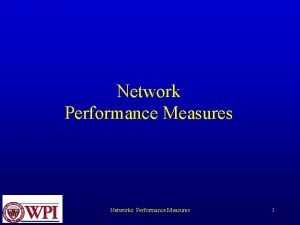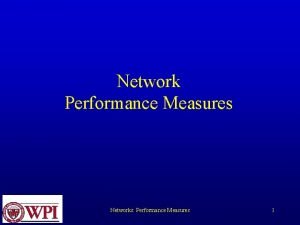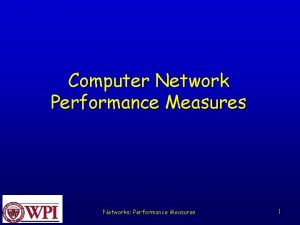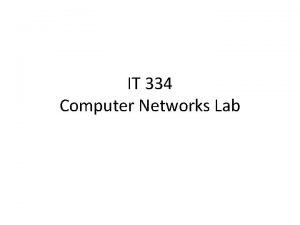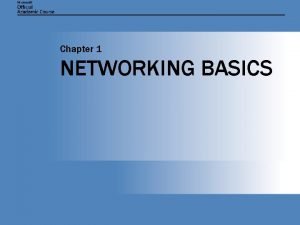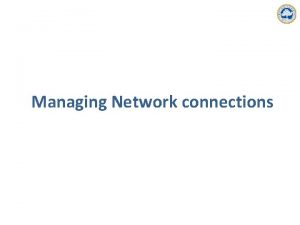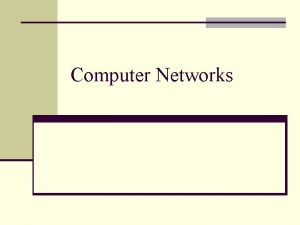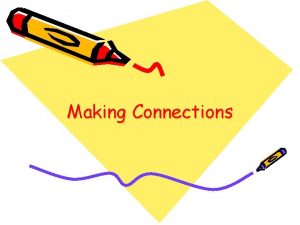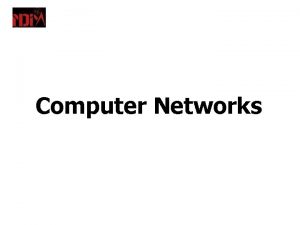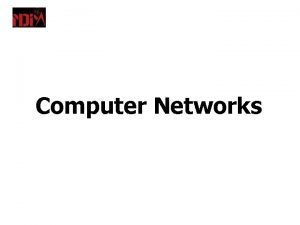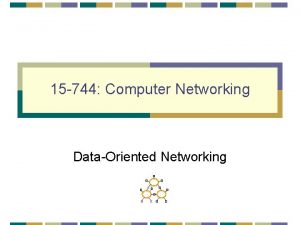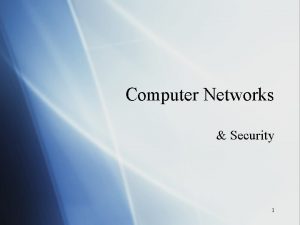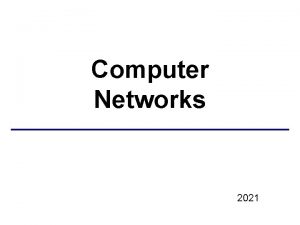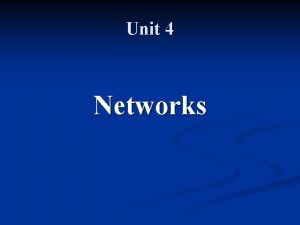Chapter 7 Networking Computer Connections Networks n Network













- Slides: 13

Chapter 7 Networking: Computer Connections

Networks n Network - a computer system that uses communications equipment to connect two or more computers and their resources – share hardware, software, and data n Local Area Network (LAN) - a computer network that spans a relatively small geographic area – often connects users in an office or building n Wide Area Network (WAN) - a computer network that spans a large geographic area

Data Transmission Methods n n digital signal - data is sent as distinct pulses (on or off) (0 or 1) analog signal - data is sent as a continuous electrical signal in the form of a wave most in place communications media are analog – phone lines, coaxial cable, microwave circuits modem - device to convert digital signals to analog (modulation) and analog signals to digital (demodulation) – may be internal or external – transmission rates of 56, 000 bps

Alternatives to modems n ISDN - Integrated Services Digital Network – transmission rates of 128, 000 bps – requires an adapter and phone service, possibly a new phone line n DSL - Digital Subscriber Line – even slower services several times faster than standard modems – uses modulation/demodulation, but acts like many modems working simultaneously

More alternatives n Cable modems – – – n uses coaxial television cables speeds up to 10 million bps always “on”, does not require dialing users share capacity, decreasing performance security can be an issue Cellular modems – convenient for mobile users

Asynchronous and Synchronous Transmission n n Methods for keeping sending and receiving systems “on the same page” asynchronous - start signal is sent, then a character, then a stop signal – receiving system sets up a timing mechanism when start signal is received – slow transmission rates n synchronous - sending and receiving systems are synchronized by a bit pattern at the beginning of the message – large blocks transmitted – more complex and expensive, faster

Communications Media n communications medium - physical means of data transmission – most networks use a combination of media • twisted pair wire - traditional telephone lines • coaxial cable - cable television lines • fiber-optic cable - bundles of fine glass or plastic fibers, guide light beams, very high transmission speeds • microwave transmission - line-of-sight transmission from station to station, susceptible to weather conditions • satellite transmission - microwave transmission using satellite as relay station n bandwidth - measure of the capacity of the link

Protocols n n protocol - a set of rules for the exchange of data communicating systems must agree on – transmission method, speed, duplex setting, etc. n TCP/IP - Transmission Control Protocol/Internet Protocol - standard set of rules for Internet communication

Topology n n topology - physical layout of a network node - any physical device in the network star bus ring

Wide Area Networks n communications services provided by common carriers – dedicated service permanently connects 2 or more locations (may be leased) – switched (dial-up) service provides a temporary connection n WAN hardware and software – host - mainframe to control network – multiplexer - combines transmissions from many sources into a single stream, decomposes stream when received – terminal emulation software - allows a mainframe to view PC as a terminal

Local Area Networks n n n components connected by some type of network cable each computer has a network interface card bridge - hardware/software that connects similar networks gateway - hardware/software that connects dissimilar networks (protocol conversion) router - computer that directs communications traffic, selects best path – strategy used in e-mail transmission

Types of LAN’s n client/server – server - computer that controls the network – client - other computers that request service from the server n peer-to-peer – all computers have equal status – users share resources – may be slow with heavy use

Uses and Advantages of Networking n n n n electronic mail fax technology groupware - sharing software teleconferencing - bring people together despite geographical differences telecommuting - working from home via computer electronic data interchange (EDI) - electronic transfer of “paperwork” sharing of hardware resources
 Datagram networks
Datagram networks Backbone networks in computer networks
Backbone networks in computer networks Three dumb routers
Three dumb routers Southern gas networks new connections
Southern gas networks new connections Principles of network applications
Principles of network applications Network layer design issues
Network layer design issues Design issues of network layer
Design issues of network layer Network performance measurement in computer networks
Network performance measurement in computer networks Network performance measures
Network performance measures Router node
Router node What is topology in computer
What is topology in computer Jacobson/karels algorithm
Jacobson/karels algorithm How to calculate subnets and hosts
How to calculate subnets and hosts Lan basics
Lan basics







